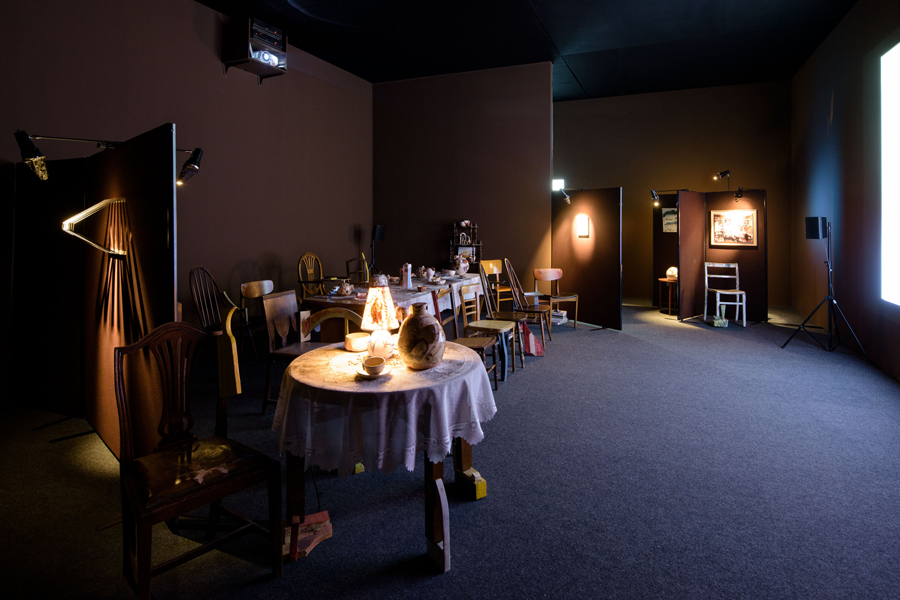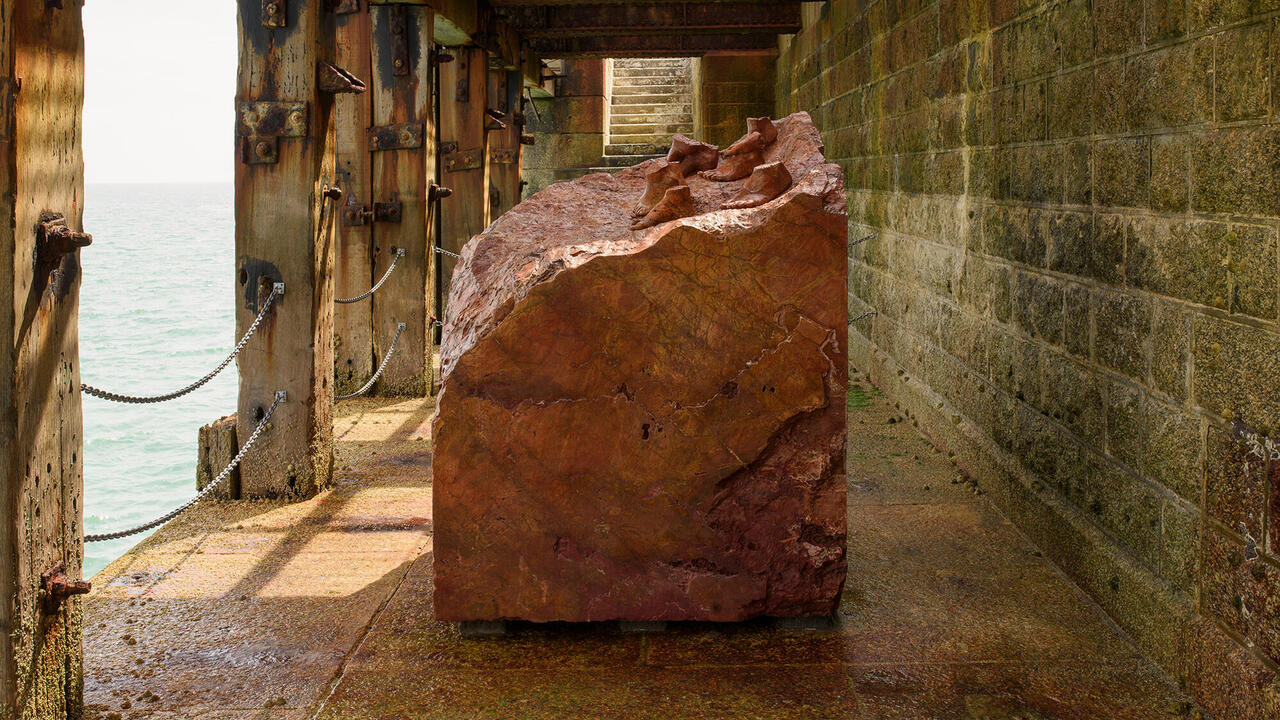Laure Prouvost
Kunstmuseum Luzern, Switzerland
Kunstmuseum Luzern, Switzerland

With ‘And she will say: hi her, ailleurs, to higher grounds…’ at Kunstmuseum Luzern (the third leg of a solo exhibition made in collaboration with Le Consortium, Dijon and MMK Frankfurt), it took Laure Prouvost only seconds to shatter my perspective as distanced observer. A strip of MDF, coated in blue synthetic resin and dirtied by scattered soil, fills the full width of the gallery entrance. I awkwardly squeezed my way along the small gap between path and wall, until an attendant instructed me to just walk on the MDF.

The blue path led me straight to Prouvost’s video installation Wantee (2013), which takes up the story of the artist’s artiste manqué grandfather. He apparently disappeared, to the dismay of Prouvost’s grandmother, while making his final work: a tunnel dug from his living room in France to Africa. The fictitious story, presented here in a replica of the artist’s grandparents’ living room, is shot in jittery, home-movie style and is told in a whispery, childlike narration makes no distinction between key facts and minor details. This enchanted evocation of her grandparents’ house expresses the core mythology that underpins this exhibition. As well as being represented in the surreal sculpture series ‘Shovels’ (2015–ongoing), Prouvost’s apocryphal story recurs in the tenderly ironic Grand Ma’s Dream (2013), a film that visualizes her grandmother’s daydreams. For all its humour, the film is insightful in its consideration of the demands imposed by artists on their relatives and loved ones – who often must put aside their own desires and talents.
Prouvost’s grandfather’s ‘descent’ into his work, though, can also be read as a metaphor for the immersive techniques at work in this exhibition, which are best exemplified here by the film Swallow (2013). The work offers a succession of clichés of sensuality: naked women bathing, split fruit with juicy flesh, mouths eating raspberries. The soundtrack layers heavy breathing with siren-sweet voices that directly invite the viewer to enter the picture and get undressed. Through her hyperbolic deployment of eroticism, Prouvost seems to want to push the cinematic gaze to its breaking point.

Leaving the blue strip, I wandered the labyrinthine exhibition spaces, coming to dead ends and various signs: Ideally you would have gone left (2016) and Ideally this sign would take you away from here (2016). Here Prouvost’s aim to create a state of immersion develops into an interest in the conventions of museum display and architecture. In the video If it was (2015), Prouvost designs a whimsical, alternative museological space where visitors can touch the art, a Francis Bacon picture can be ‘improved’ with the paints provided, the attendants offer massages, and instead of conceptual art there is Zumba. This undermining of the museum’s authority – filmed at the Haus der Kunst in Munich, built by Nazi architect Paul Ludwig Troost – does not feel ridiculous, but deftly mobilizes personal whimsy as its own form of institutional critique.
Prouvost’s flouting of institutional norms is linked back to the droll grandfather narrative with Maquette for Grand Dad’s Visitor Center (2014) – a sculpture styled in the form of an architectural model that with its Frank Gehry style parodies recent conventions of museum architecture. The exhibition concludes with Prouvost’s own personal ‘collection’, Love Among the Artists (2016), which is displayed in a room of its own. This show-within-a-show comprises works by 14 of the artist’s friends, including Juliette Blightman, Tom Humphreys and Anne-Mie Van Kerckhoven. It’s here that Prouvost’s undoing of the normative codes of her chosen medium – be it film, installation or the exhibition itself – becomes most pointed. Only after I was tempted to reach out and physically touch an installation by Cally Spooner was I aware of just how far, and how successfully, I had been drawn into Prouvost’s own ‘tunnel’.
Translated by Nicholas Grindell; lead image: Laure Prouvost, Ideally This Sign Would be the Taste of Escape, 2016. Courtesy: the artist, Galerie Nathalie Obadia, Paris and Brussels, and carlier | gebauer, Berlin























